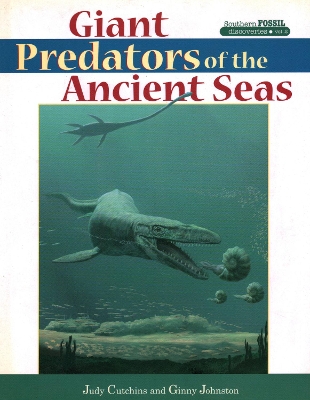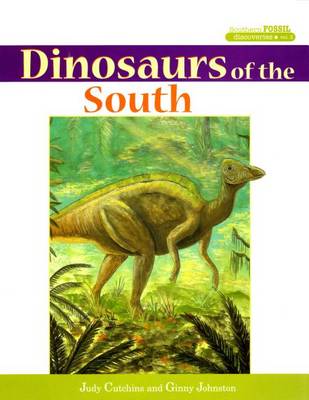Southern Fossil Discoveries
3 total works
A look at prehistoric sea creatures for ages 8-12
The perfect complement to a curriculum encompassing science, natural history, and vocabulary, Giant Predators of the Ancient Seas explores how scientists use fossil clues to learn about the lives and habitats of the most exciting sea animals that ever lived. Focusing on archaeological digs and finds along the entire southern shore of the United States, the book gives readers an in-depth, straightforward look at the giant creatures that prowled the waters of prehistory. A glossary of unfamiliar terms, an index, and full-color photos and illustrations round out this scientific yet readable guide.
The perfect complement to a curriculum encompassing science, natural history, and vocabulary, Giant Predators of the Ancient Seas explores how scientists use fossil clues to learn about the lives and habitats of the most exciting sea animals that ever lived. Focusing on archaeological digs and finds along the entire southern shore of the United States, the book gives readers an in-depth, straightforward look at the giant creatures that prowled the waters of prehistory. A glossary of unfamiliar terms, an index, and full-color photos and illustrations round out this scientific yet readable guide.
Volume 3 in the Southern Fossil Discoveries series, Dinosaurs of the South offers new and exciting information about life during the Late Cretaceous in the southern coastal states. Like its companion volumes, Ice Age Giants of the South and Giant Predators of the Ancient Seas, this book is rich with dozens of color photos and original art.
Fossils of extinct animals are scarce in the southeastern United States, but paleontologists have uncovered enough evidence to know that a variety of dinosaurs lived in southern forests and coastal lowlands. Large meat-eaters hunted plant-eating hadrosaurs. Ostrich-like dinosaurs darted after small prey, and armor-covered nodosaurs rambled through underbrush 75 million years ago. And giant reptiles that were not dinosaurs also lived in the South, including the crocodile-like Deinosuchus.
Every fossil uncovered gives scientists new information about life in this region of North America during the time of the dinosaurs. And studying rare southern fossils has enabled paleontologists to identify entirely new dinosaur species known only in the South.
Fossils of extinct animals are scarce in the southeastern United States, but paleontologists have uncovered enough evidence to know that a variety of dinosaurs lived in southern forests and coastal lowlands. Large meat-eaters hunted plant-eating hadrosaurs. Ostrich-like dinosaurs darted after small prey, and armor-covered nodosaurs rambled through underbrush 75 million years ago. And giant reptiles that were not dinosaurs also lived in the South, including the crocodile-like Deinosuchus.
Every fossil uncovered gives scientists new information about life in this region of North America during the time of the dinosaurs. And studying rare southern fossils has enabled paleontologists to identify entirely new dinosaur species known only in the South.
Saber-toothed cats, dire wolves, mammoths, mastodons, and giant sloths are just a few of the large animals that lived during the Ice Ages, which began 1.8 millions years ago. Ten thousand years ago, when a warming trend brought the last Ice Age to an end, these extraordinary animals became extinct. Fossils are the only clues to their lives and habitats, and the southern United States is one of the best places in the world to find Ice Age Fossils.
Southern river bottoms, rock quarries, sinkholes, and caves are treasure chests of Ice Age fossils. Scientists and amateur collectors have uncovered bones and teeth of extinct giant mammals. The fossils provide important clues that help scientists piece together a story of what life was like more than 10,000 years ago.
Southern river bottoms, rock quarries, sinkholes, and caves are treasure chests of Ice Age fossils. Scientists and amateur collectors have uncovered bones and teeth of extinct giant mammals. The fossils provide important clues that help scientists piece together a story of what life was like more than 10,000 years ago.


